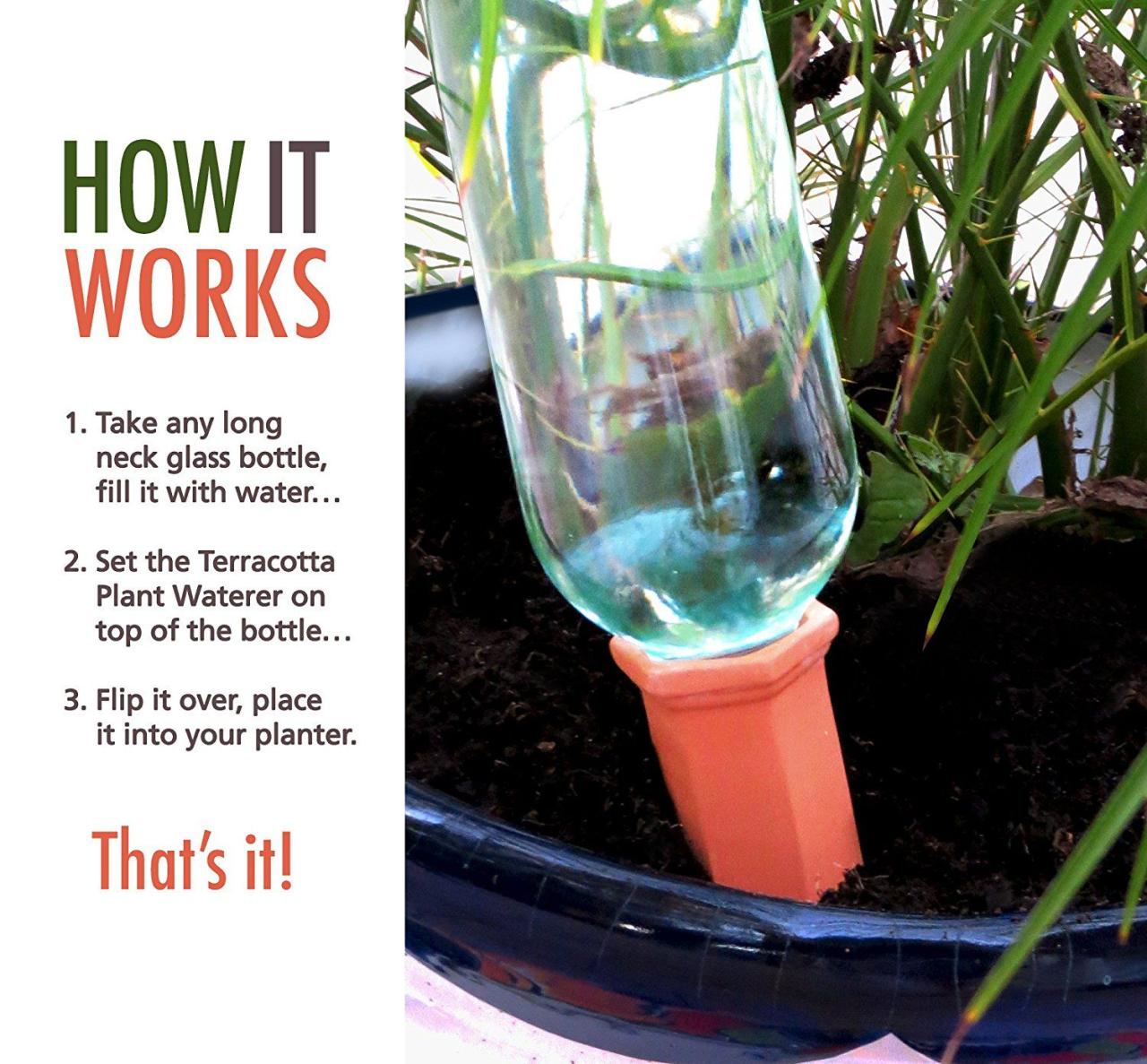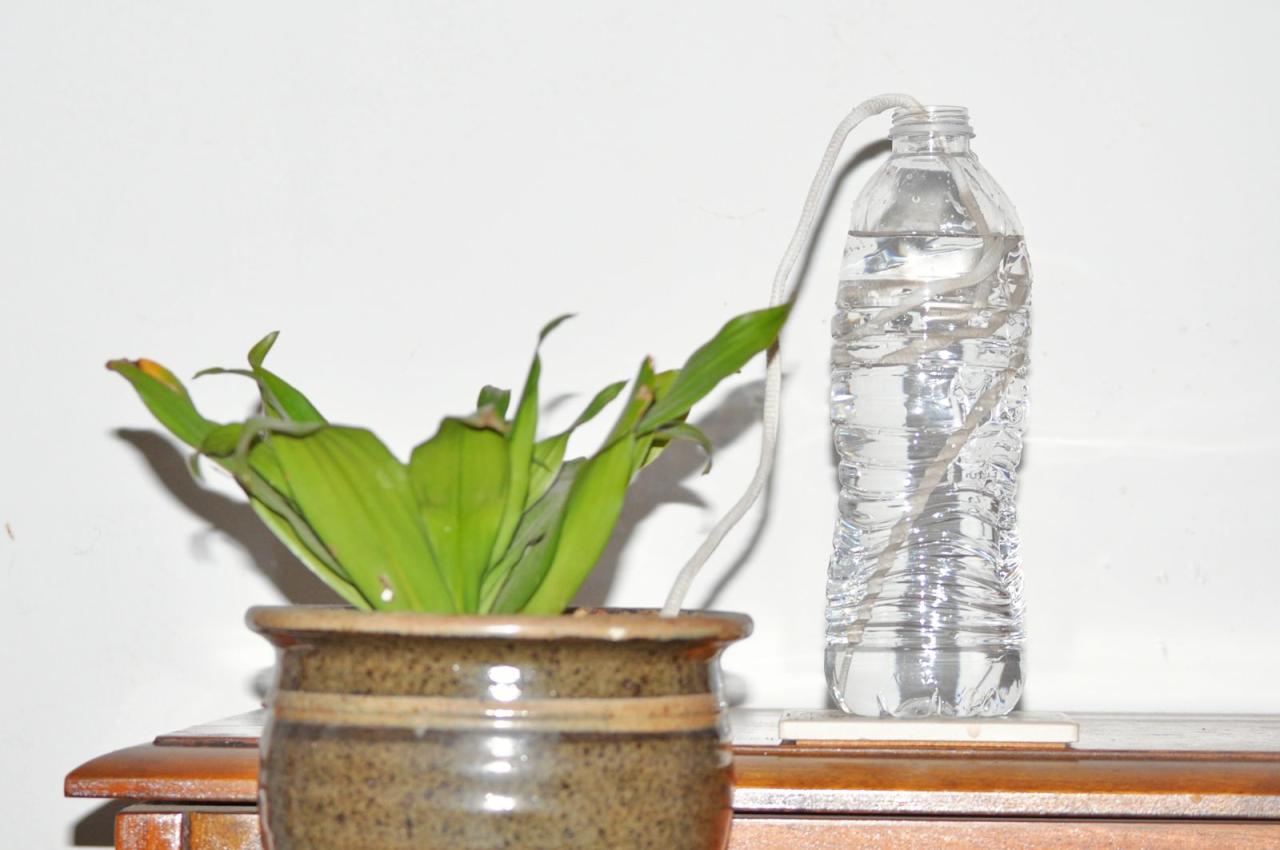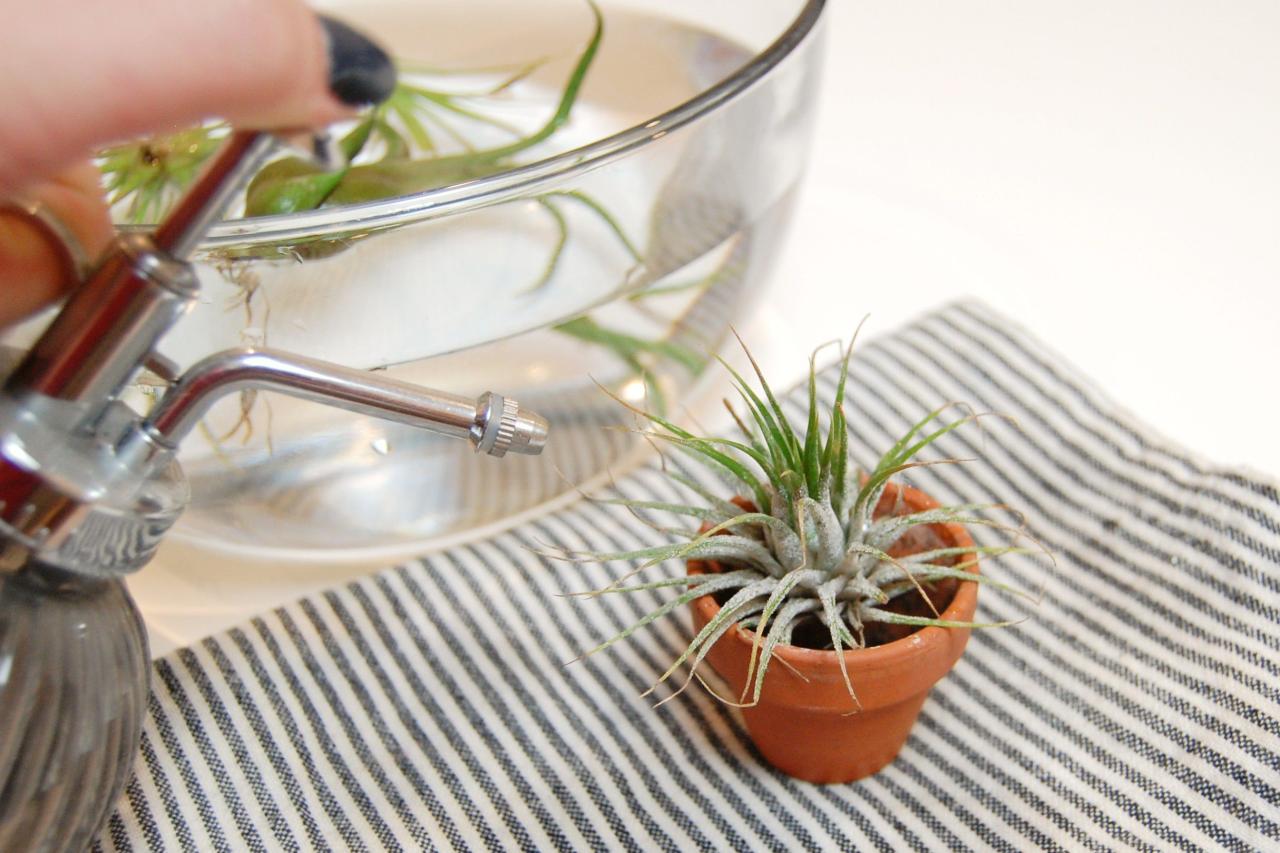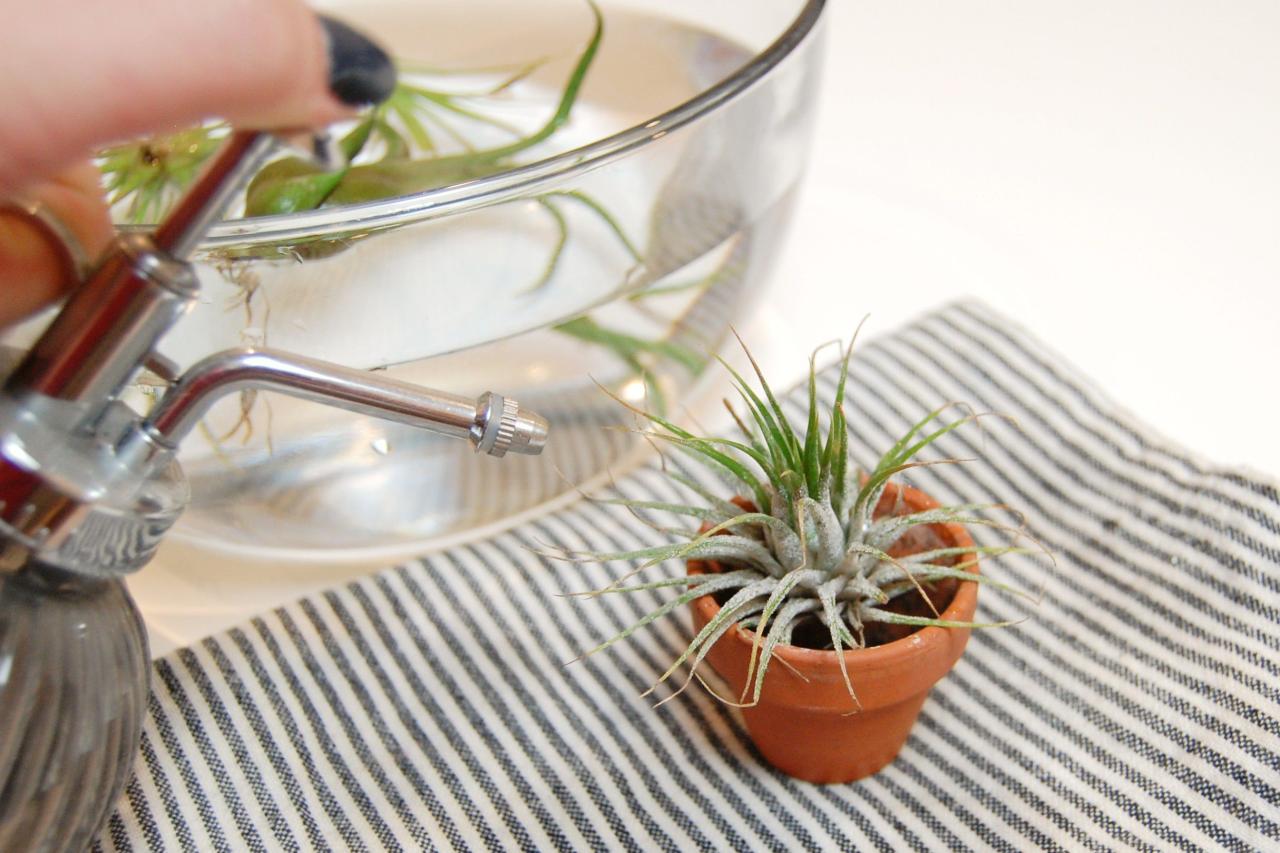How to Water Air Plants While Traveling: Air plants, also known as Tillandsia, are a fascinating and low-maintenance addition to any home. Their ability to absorb moisture from the air makes them a popular choice for those who forget to water their plants regularly.
But what happens when you need to travel and leave your air plants behind? This guide provides practical tips and techniques for keeping your air plants healthy and thriving while you’re away.
Understanding the unique needs of air plants is crucial for their survival. Unlike traditional houseplants, air plants do not rely on soil for hydration. Instead, they absorb moisture from the air through specialized scales called trichomes, which cover their leaves.
This adaptation allows them to thrive in various environments, from rainforests to deserts. The humidity level in their surroundings significantly influences their ability to absorb moisture.
Understanding Air Plant Watering Needs
Air plants, also known as epiphytes, are unique in their ability to thrive without soil. Unlike traditional plants that rely on soil for water and nutrients, air plants absorb moisture and nutrients directly from the air. This adaptation allows them to flourish in diverse environments, from humid rainforests to arid deserts.
Understanding the unique watering requirements of air plants is crucial for their well-being.
The Importance of Humidity
Humidity plays a vital role in the health of air plants. These plants rely on atmospheric moisture for hydration, and their ability to absorb water is directly linked to the surrounding humidity levels. High humidity levels, typically found in tropical environments, provide ample moisture for air plants to thrive.
However, in drier environments, it is essential to provide supplemental watering to ensure adequate hydration.
How Air Plants Absorb Moisture
Air plants have specialized structures called trichomes that cover their leaves and stems. These trichomes act as tiny sponges, absorbing moisture from the air through a process called capillary action. When air plants are exposed to humid conditions, water molecules adhere to the trichomes, creating a thin film of moisture that the plant can readily absorb.
Preparing for Travel
With your air plant’s watering needs understood, the next step is preparing for your trip. This involves gathering essential supplies and choosing the right watering method for your air plants while you’re away. The goal is to ensure your air plants stay healthy and hydrated during your absence.
Essential Supplies for Air Plant Care
Having the right supplies on hand will make caring for your air plants while traveling much easier. Here’s a checklist of essential items:
- Spray bottle:A spray bottle is the primary tool for watering air plants. Choose one with a fine mist setting for gentle application.
- Water:Use filtered or distilled water to avoid mineral buildup on your air plants. Tap water can contain chlorine and other minerals that can harm them.
- Container:A shallow container, such as a bowl or tray, is essential for soaking your air plants. The container should be large enough to hold the air plants comfortably and allow for proper drainage.
- Towel:A towel is useful for drying your air plants after soaking. This helps prevent excess moisture from sitting on the plant, which can lead to rot.
- Air plant holder:If you’re traveling with your air plants in a container, a holder will help keep them upright and prevent them from becoming entangled.
Watering Methods for Traveling
The best watering method for your air plants while traveling depends on the length of your trip and your desired level of involvement.
Method |
Description |
Pros |
Cons |
|---|---|---|---|
Soaking |
Submerging the air plants in water for a short period. |
Simple and effective for short trips. |
Requires more frequent watering and can be messy. |
Misting |
Spraying the air plants with a fine mist of water. |
Convenient and less messy than soaking. |
May not provide enough moisture for longer trips. |
Humidity Dome |
Placing the air plants in a sealed container with a moist environment. |
Provides a humid environment for prolonged periods. |
Requires careful monitoring to prevent overwatering. |
Self-Watering System |
Using a system that slowly releases water to the air plants. |
Provides consistent moisture without frequent attention. |
Can be more complex and expensive to set up. |
Preparing Air Plants for a Trip
Before you embark on your journey, it’s important to prepare your air plants for their time away from your regular care routine. Here’s a step-by-step guide:
- Water thoroughly:Give your air plants a thorough soaking a day or two before your departure. This will ensure they have ample moisture to sustain them during your absence.
- Choose a suitable watering method:Based on the length of your trip and your preferred level of involvement, select the most appropriate watering method. If you’re going on a short trip, soaking may be sufficient. For longer trips, consider misting, a humidity dome, or a self-watering system.
While you’re away, your air plants can thrive with a simple soak. Just submerge them in a bowl of water for 15-20 minutes, then let them drain completely. This method is ideal for keeping your air clean, especially if you choose to hang them like some of the amazing air-purifying varieties featured in Hanging Plants That Purify the Air.
Once you return, your air plants will be refreshed and ready to continue their work of filtering the air in your home.
- Pack securely:Pack your air plants in a way that protects them from damage during transport. Use a container with proper ventilation and cushioning to prevent them from getting crushed or jostled.
- Prepare a care guide:Write down a brief care guide for your air plants, including the chosen watering method, frequency, and any other important instructions. Leave this guide with the person caring for your plants while you’re away.
Watering Methods for Travel

When traveling, it’s crucial to find effective watering methods for your air plants that are convenient and easy to manage. Here are a few options to keep your air plants hydrated while you’re away.
Soak and Dry Method
This method involves thoroughly soaking your air plants in water for a period of time, followed by allowing them to dry completely. The soak and dry method is a popular choice for air plant care, as it mimics their natural environment.
- Soaking: Fill a bowl or sink with lukewarm water and submerge your air plants completely. Let them soak for 15-30 minutes, depending on the size and type of plant. Larger plants may require longer soaking times.
- Drying: After soaking, remove the air plants from the water and allow them to drain completely. Ensure there is no excess water trapped in the leaf axils, as this can lead to rot. Place the plants in a well-ventilated area to dry thoroughly.
This usually takes a few hours, depending on the air circulation and humidity levels.
Using a Spray Bottle
A spray bottle can be a convenient way to water air plants while traveling, particularly if you are limited on space or water access.
- Benefits: A spray bottle allows for precise application of water, reducing the risk of overwatering. It is also portable and can be used in various locations, including hotel rooms or campsites.
- Drawbacks: Spraying alone may not provide enough moisture for thirsty air plants, especially in dry environments. Frequent misting is necessary, which can be time-consuming and potentially lead to mold growth if the plants do not dry completely.
Alternative Watering Methods
While soaking and misting are common methods, there are other options to consider:
- Submerging in a Bowl of Water: Similar to the soak and dry method, this involves placing the air plants in a bowl of water for a short period. This method is particularly suitable for smaller air plants, allowing them to absorb moisture more efficiently.
Ensure the water level is not too high, as it can prevent the plants from drying properly.
- Using a Water-Retaining Material: A simple way to provide moisture is to wrap the air plant’s roots in a damp paper towel or moss. This method can be helpful for shorter trips, but it’s essential to ensure the material stays moist and doesn’t become moldy.
Maintaining Optimal Conditions
While traveling, maintaining the ideal environment for your air plants is crucial to their well-being. By replicating their natural habitat, you can ensure their health and prevent stress during your trip.
Environmental Factors to Consider
To ensure your air plants thrive while you travel, it’s important to consider several environmental factors that influence their well-being. These factors directly impact their growth, health, and overall survival.
- Light Exposure:Air plants, like their terrestrial counterparts, require adequate light for photosynthesis. Choose a travel destination with ample natural light or consider using a grow lamp to mimic their natural environment. However, avoid direct sunlight as it can scorch their delicate leaves.
- Temperature:Air plants thrive in warm temperatures, ideally between 65°F and 85°F (18°C and 29°C). Ensure your travel destination doesn’t experience extreme temperature fluctuations that could harm your plants.
- Humidity:Air plants thrive in humid environments, as they absorb moisture from the air. While traveling, you can maintain humidity by placing your air plants in a humid location, such as a bathroom or kitchen. Alternatively, you can use a humidifier or create a small terrarium to increase humidity levels.
- Ventilation:Good ventilation is crucial to prevent mold and mildew growth, which can be detrimental to your air plants. Ensure proper air circulation by placing your plants in a well-ventilated area.
Proper Ventilation
Adequate ventilation is crucial for air plants as it helps prevent mold and mildew growth, which can be harmful to their health.
- Circulating Air:Ensure proper air circulation around your air plants. This prevents moisture from stagnating and creating an environment conducive to mold and mildew.
- Avoid Stagnant Air:Do not place your air plants in enclosed spaces with poor ventilation, as this can lead to fungal growth.
Light Exposure
Air plants, like other plants, require light for photosynthesis, the process by which they convert light energy into chemical energy for growth.
- Bright, Indirect Light:Aim for a location with bright, indirect light. Avoid direct sunlight, which can scorch their delicate leaves.
- Artificial Light:If natural light is limited, consider using a grow lamp to provide adequate light for your air plants.
Maintaining Optimal Humidity
Air plants absorb moisture from the air, so maintaining adequate humidity is crucial for their well-being.
- Humid Locations:Place your air plants in a humid location, such as a bathroom or kitchen, to increase humidity levels.
- Humidifier:If humidity is low, consider using a humidifier to create a more humid environment.
- Terrarium:A small terrarium can help create a humid microclimate for your air plants.
Troubleshooting Common Issues: How To Water Air Plants While Traveling

While air plants are generally resilient, they can experience issues when traveling, especially if their needs are not met. Recognizing and addressing these problems promptly can help prevent damage and ensure your air plants thrive upon your return.
Overwatering
Overwatering is a common issue when caring for air plants, particularly during travel. Excess moisture can lead to root rot, which can weaken the plant and make it susceptible to disease.Overwatering can be identified by the following signs:
- Soft, mushy leaves
- Brown or black spots on the leaves
- A foul odor emanating from the plant
- The plant may feel heavy and limp
To revive an overwatered air plant, gently remove any excess moisture from the base of the plant and allow it to dry completely. Place the plant in a well-ventilated area, out of direct sunlight, to encourage drying. Avoid watering the plant for a few weeks until it shows signs of recovery.
While air plants are low-maintenance, keeping them hydrated while traveling can be tricky. A good option is to submerge them in a bowl of water for 15-20 minutes once a week, ensuring they’re fully saturated. This also helps prevent pesky gnats, which can be a problem for plant owners.
To create an environment that discourages gnats, consider using a well-ventilated space with good airflow , which also helps air plants dry quickly after soaking, preventing rot.
Underwatering
Underwatering is less common than overwatering, but it can still occur, especially if your air plant is left in a dry environment for an extended period. Dehydration can cause the leaves to become dry, brittle, and discolored.Signs of underwatering include:
- Leaves that are dry, brittle, and discolored
- The plant may appear shriveled or wilted
- The leaves may feel stiff and crunchy
To revive an underwatered air plant, soak it in a bowl of water for 30 minutes. After soaking, gently shake off excess water and allow the plant to dry completely. Avoid direct sunlight until the plant has fully rehydrated.
Pest Infestations
Air plants are susceptible to pests such as mealybugs, aphids, and scale insects. These pests can feed on the plant’s sap, causing damage and weakening its health.Signs of pest infestation include:
- Tiny white, cottony patches on the leaves
- Small, black or brown spots on the leaves
- Sticky residue on the leaves
To treat a pest infestation, isolate the affected plant from other plants. Gently wipe the leaves with a cotton swab dipped in rubbing alcohol to remove pests. Repeat this process every few days until the infestation is gone. You can also use insecticidal soap or neem oil to control the pests.
Reviving a Stressed Air Plant, How to Water Air Plants While Traveling
If your air plant shows signs of stress, such as wilting, discoloration, or stunted growth, there are steps you can take to revive it.To revive a stressed air plant, follow these steps:
- Identify the cause of stress: Determine whether the plant is overwatered, underwatered, or experiencing pest problems.
- Address the problem: Implement the appropriate solution based on the identified cause of stress.
- Provide optimal conditions: Ensure the plant has access to bright, indirect light and good air circulation.
- Be patient: Air plants can take time to recover from stress.
Be patient and continue to provide proper care, and your plant should eventually regain its health.
Last Recap

Traveling with air plants requires a bit of planning and attention to their needs. By understanding their unique watering requirements and implementing the appropriate care techniques, you can ensure their well-being while you’re away.
Whether you’re embarking on a short weekend getaway or a longer vacation, these tips will help keep your air plants thriving. So pack your bags, grab your air plants, and enjoy your trip knowing that your green companions are in good hands.
FAQ Guide
How often should I water my air plants while traveling?
The frequency of watering depends on the method you choose. If you’re using the soak and dry method, a thorough soaking every 1-2 weeks should suffice. For misting, you’ll need to mist them daily or every other day, depending on the humidity levels.
Can I use tap water to water my air plants?
While tap water is generally safe, it’s best to use filtered or rainwater. Tap water often contains minerals and chemicals that can build up on the plant’s leaves and hinder their ability to absorb moisture.
What if I don’t have access to water while traveling?
If you’re traveling to a remote location with limited access to water, consider using a water-retaining material like sphagnum moss. Simply wrap the moss around the base of your air plant, and it will gradually release moisture as needed.
